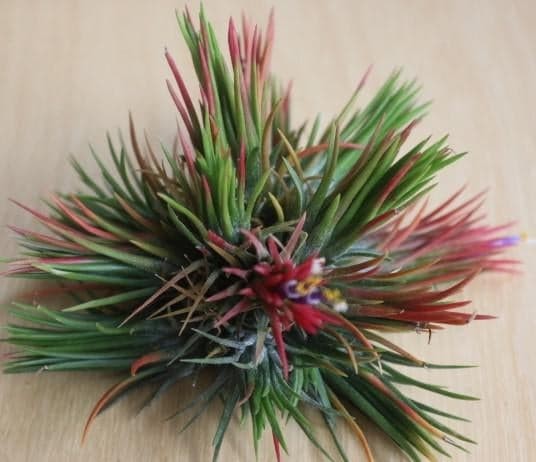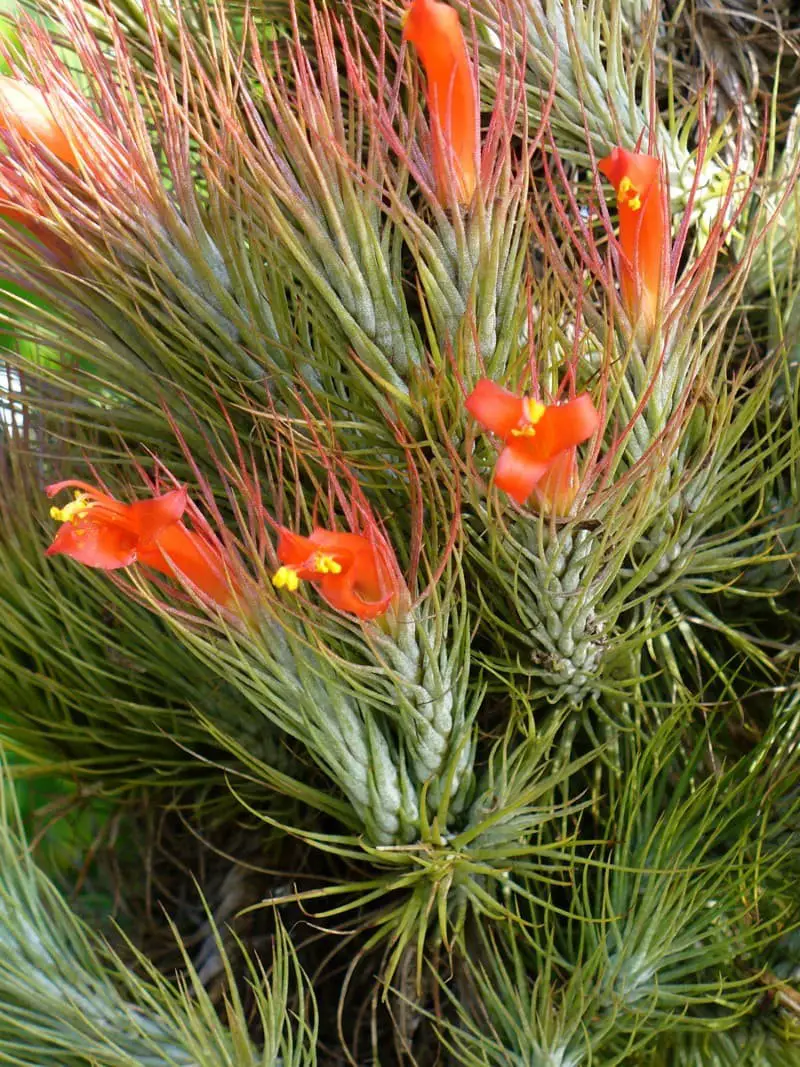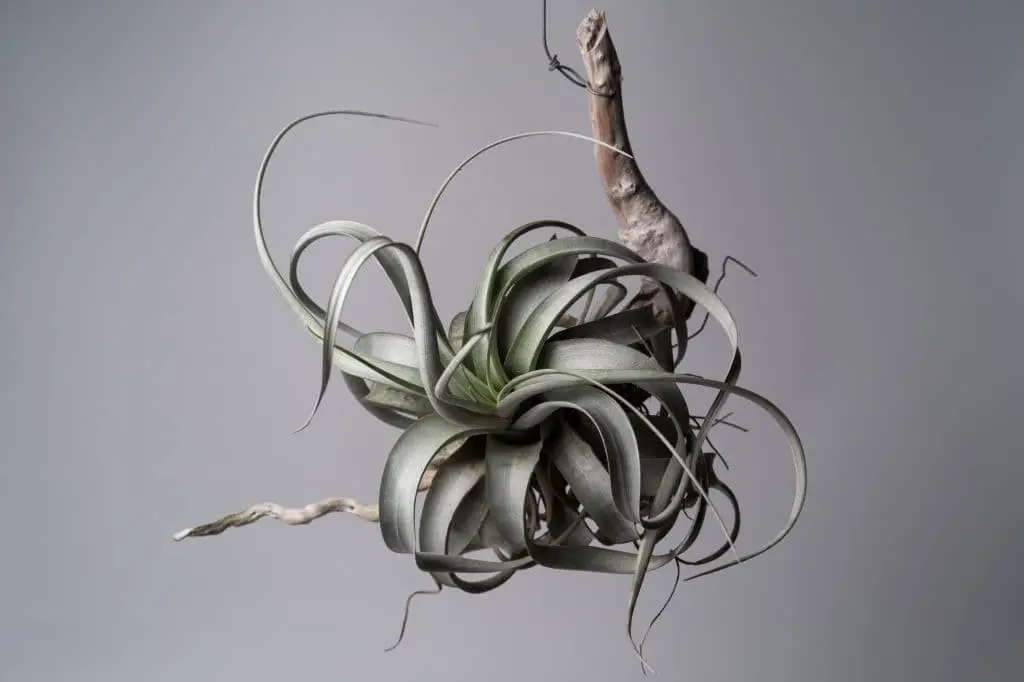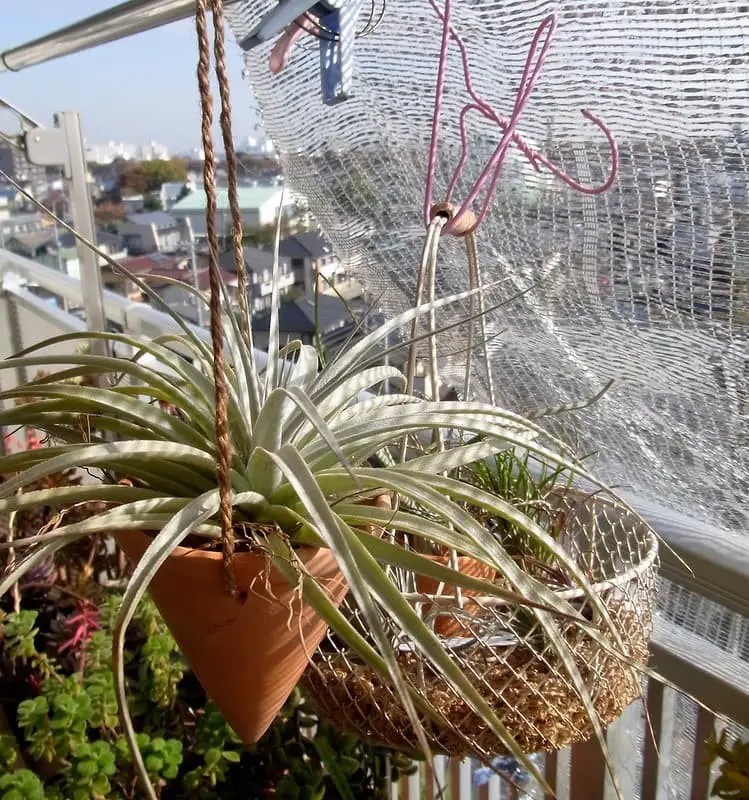30+ Different Types Of Air Plants (Tillandsia Spp.) With Pictures
Air plants, often referred to as the cousin of Bromeliad, have gained popularity as flowering houseplants. With over 500 species, one of their most fascinating characteristics is that they can thrive without roots. Additionally, air plants are known for being low-maintenance, making them an ideal choice for any home. This diversity allows for various types to suit different tastes and preferences.
In this article, we’ll explore some of the most common types of air plants, as well as provide notable FAQs on care and maintenance.
What are air plants?
Air plants, commonly known as tillandsias, have gained popularity as decorative houseplants found in tropical and subtropical regions of the United States. Their uniqueness lies in their ability to thrive without soil and water dependence. In their natural habitat, they are classified as epiphytes, attaching themselves to hosts but not forming parasitic relationships.
As their name suggests, air plants freely suspend from their hosts, feeding on moisture-rich dirt fibers to grow.
When cultivated indoors, these plants require occasional watering and sufficient sunlight to flourish, earning them a reputation as one of the most ideal indoor plants.
Air plant symbolism
Air plants embody simplicity in their symbolism as well. They represent freedom and creativity, two concepts that are closely tied to the idea of being unencumbered and unrestricted. In many ways, air plants’ lightweight nature makes them a symbol of freedom, as they can be easily transported from one place to another without feeling burdened or weighed down.
Additionally, the process of finding creative solutions for displaying an air plant in a small or confined space requires resourcefulness and problem-solving skills, which can bring out the creative potential within us.
How do I identify an air plant?
These miniature plants stand out for their compact size and lack of visible roots. Typically, they display a vibrant green hue, with slender and elongated leaves that dangle elegantly. By attaching themselves to large tree trunks or indoor surfaces, they create a visually calming effect, making them a popular choice for interior decoration.
Air plant benefits
Immerse yourself in serenity by incorporating air plants into your daily life. Not only do they effortlessly reduce stress and boost energy levels, but their gentle presence also brings a calming ambiance to any space. As you gaze upon their delicate forms, the tension melts away, replaced by a sense of peacefulness. Beyond their tranquil aura, air plants possess a unique ability to purify the air by absorbing mercury, a common toxin found in many homes.
This natural detoxification process is a significant advantage for those seeking a healthier environment. Air plants are also celebrated for their exquisite decorative qualities. Their slender stems and leaves create a visually striking display that can be effortlessly suspended from walls or other objects in a room, adding an air of sophistication to any space.
Types of air plants
Argentea (Tillandsia fuchsii var. gracilis)

Characterized by its slender, elongated gray-green leaves, this particular type of air plant demands only a modest amount of sunlight to thrive. Measuring between 5-6 inches in height and approximately 1-2 inches in width, it is a compact yet striking addition to any space.
Bailey’s ball moss (Tillandsia Baileya)

The Reflexed Air Plant is characterized by its striking features, including long and flexible leaves with a thin profile and horizontal markings. Its floral display is equally impressive, featuring 3-cm long pinkish blooms. To thrive, this type of air plant demands an abundance of sunlight, so be sure to place it in a spot that receives the necessary rays.
Ball Moss (Tillandsia recurvata)

The small ball moss, also referred to as Tillandsia butzii or ball moss, exhibits a unique nest-like shape and sports gray-green leaves with delicate lavender blooms emerging from them. What sets this air plant apart is its remarkable ability to germinate seeds directly on the seed pod itself, making propagation relatively effortless. Furthermore, when the plant transitions to a reddish hue, it serves as a subtle indication that its flowers have begun to bloom.
Bulbous air plant (Tillandsia bulbosa)

Characterized by its striking foliage, this peculiar plant boasts long, slender leaves that resemble tentacles. As the flowers prepare to bloom, the leaves shift in color, adopting hues of purple or red. What’s more fascinating is the plant’s unique symbiotic relationship with ants, which allows these tiny creatures to reside within the plant’s structure. In terms of growing conditions, this species thrives in areas receiving partial sunlight and reaches a moderate height of 4-7 inches.
Cacticola (Tillandsia cacticola)

Characterized by its striking silver-green foliage and delicate lavender blooms, this particular species of air plant boasts a unique appearance that sets it apart from others in its class. However, its low propagation rate, resulting in few offsets being produced, makes it particularly challenging to cultivate and increases its rarity among air plants.
Circinata (Tillandsia circinata)

The succulent boasts striking features, including its robust silver-green foliage, which serves as the backdrop for its vibrant floral displays. The blooms themselves are a stunning combination of sunshine-yellow and regal-purple hues, measuring up to 8 inches in length.
‘Cotton Candy’ (Tillandsia stricta x T. recurvifolia ‘Cotton Candy’)

Characterized by slender, silver-tinged leaves reminiscent of loose spider dahlias, this type is specifically prized for its showy floral displays. The plant’s vibrant pink blooms are a key draw, requiring well-lit conditions to unfurl their full splendor.
Didisticha (Tillandsia didisticha)

Air plants are known for their unique characteristics, but one type stands out from the rest due to its remarkable size. This particular variety boasts long, slender, gray-green leaves that originate from the base of the plant, unlike others which tend to have shorter, more rounded foliage. The crowning glory of this air plant is its stunning floral display, featuring delicate white blooms surrounded by pinkish bracts, adding a touch of elegance and sophistication to any space.
Druid sky plant (Tillandsia ionantha ‘Druid’)

The petite air plant boasts delicate, pink-hued leaves that give rise to elegant white blooms. Measuring approximately 2-4 inches in length, this compact species thrives in bright, indirect sunlight.
Dyeriana (Tillandsia dyeriana)

The vibrant orange hue of this air plant’s leaves is a testament to its tropical origins. As an added bonus, it produces delicate white flowers. This variety thrives when potted and requires consistent moisture to reach its full potential. When cultivated in containers, it can grow impressively tall, reaching heights of up to 18 inches.
Flabellata (Tillandsia flabellata)

The ‘candelabra’ type of air plant is characterized by its striking foliage, which resembles the shape of a candelabra as it grows tall and spreads outwards. One notable feature of this species is its vibrant red flowers, which add to its unique charm. When fully grown, this air plant can reach approximately 12 inches in height, making it a noticeable addition to any space.
Fuego sky plant (Tillandsia ionantha ‘Fuego’)

The tiny air plant boasts a striking feature – its leaves maintain a captivating pink hue even after the flowers have bloomed. Measuring just one inch in height, this compact beauty thrives in offices and living rooms as a stylish addition to any tabletop or coffee table.
Funkiana (Tillandsia funkiana)

Elongated air plants are characterized by their unique ability to bend or curl into various shapes, often forming intricate spirals. Reaching approximately 2 inches in height, these compact plants are well-suited for desktop spaces. A notable feature of this type is the striking color change that occurs as the flowers bloom – the leaves take on a reddish hue, while the inflorescence itself turns a vibrant red.
The reward for this visual display is the appearance of bright yellow flowers, adding a pop of color to any room.
Fuzzy wuzzy (Tillandsia pruinosa)

The Fuzzywuzzy air plant boasts a unique characteristic – its velvety leaves twist and turn in a mesmerizing display. The plant also produces striking purple flowers with vibrant pink bulbs, adding an extra layer of visual appeal. When it comes to lighting, Fuzzywuzzy requires good circulation rather than direct sunlight, but still needs some partial sunlight exposure. However, this plant’s popularity has led to concerns about its conservation status in the wild.
In certain regions, such as Floria, Fuzzywuzzy is considered endangered due to the damage it causes to insect habitats and ecosystems.
Gardneri (Tillandsia gardneri)

The air plant in question bears a striking resemblance to a small yucca plant, boasting pale grayish leaves and reaching impressive heights of up to 12 inches. Its adaptability to low-light conditions makes it an ideal choice for those seeking a plant that can thrive without intense illumination.
Giant Air Plant (Tillandsia fasciculata)

The Giant Air Plant, also known as the Quill-Leaf Air Plant, Cardinal Air Plant, or Wild Pineapple, is a highly popular and diverse species among plant enthusiasts. With numerous variations and hybrids available, it’s no wonder many people own one of these remarkable plants.
Houston cotton candy (T. stricta x T. recurvifolia)
Characterized by its rapid growth rate and striking appearance, this variety of air plant boasts a lush silver rosette adorned with soft, silvery leaves that deepen to a rich purple hue when in bloom. Its breathtaking display is further enhanced by the production of exquisite cotton candy-hued blooms, delicately accented by snowy white flowers.
King of Tillandsias (Tillandsia xerographica)

The esteemed Tillandsia species boasts a majestic appearance, characterized by broad, flat gray-green leaves that form a stunning rosette. A distinguishing feature is the emergence of new leaves from the center of the rosette, where they thrive due to the stored water within the plant’s tissues, ultimately contributing to their striking growth and development.
Kolbii (Tillandsia scaposa ‘Kolbii’)

One distinctive characteristic of this air plant is its unique growth pattern, which causes it to sprout in unusual, irregular directions. However, this peculiarity comes with a caveat – when the plant becomes parched and dry, its typical vibrant coloration transforms into a dull grey hue, rendering it less visually appealing. As such, it’s crucial to ensure that the plant receives an adequate amount of moisture to revive its natural beauty.
Loliacea (Tillandsia loliacea)

While some air plants may be smaller in size, this particular variety stands out for its striking appearance. Despite its modest growth of less than an inch and a half, it boasts an impressive feature – self-pollinating flowers that add to its visual appeal.
Mad pupper (Tillandsia aeranthos bergeri)

The Mad Pupper, a beloved type of air plant, is renowned for its vibrant floral displays. In the spring, it bursts forth with an array of pink and blue hues, captivating audiences with its lively colors. One of the reasons for its enduring popularity is its low-maintenance nature, much like other air plants. It thrives in well-lit environments, tolerating both bright lights and fluorescent illumination.
Maxima sky plant (Tillandsia ionantha ‘Maxima’ or ‘Huamelula’)

The Huamelula, also known as the source air plant, is a popular variety that’s often found in markets. What sets it apart from others is its unique ability to produce multiple purple flowers at once. One of the distinguishing features of this species is the way its leaves turn red before the plant blooms. As a larger air plant, the Huamelula can grow up to 6 inches tall, making it a striking addition to any space.
Peach Air plant (Tillandsia capitata ‘Peach’)
Characterized by its velvety softness, this air plant boasts a striking silver-green rosette that undergoes a remarkable transformation when the flowers are about to bloom – shifting to a captivating pink hue. The harmonious blend of peach and purple tones further enhances its visual appeal, making it stand out from other varieties. Notably, this type of air plant is classified as a large species, reaching up to 8 inches in height, making it a show-stopping addition to any arrangement.
‘Pink Bronze’ (Tillandsia stricta ‘Pink Bronze’)

Characterized by its slender, light green leaves with striking purple blooms, this versatile plant boasts a clean and modern aesthetic that makes it an ideal choice for both home and office décor. Its ability to flourish in bright light conditions, coupled with its compact growth habit reaching up to 12 inches tall, makes it a practical and stylish addition to any space.
Pink quill plant (Tillandsia cyanea)

Air plants known as Bromeliad inches are short-term visitors rather than permanent residents due to their remarkably brief lifespan of just three months following the flower’s bloom. Compared to other varieties, this type produces dull pink flowers and is smaller in size. As one of the most affordable air plant options available in the market, it makes for a great addition to any home, serving well as a houseplant.
Sky plant (Tillandsia ionantha)

The air plant commonly referred to as a skyplant is a highly sought-after variety among enthusiasts. Its silvery-green foliage undergoes a striking transformation as it matures, transitioning from its natural hue to vibrant shades of red and pink following the blooming of its flowers.
Snowball (Tillandsia tectorum)

The Tillandsia Tectorum, also known as the Snowball Air Plant, boasts a unique snowball-like appearance and a striking white coloration. Its soft, lightweight tectorum makes it an attractive addition to any space. With proper care, this type of air plant can grow quite large, making it a great option for those who want to make a statement. One of its notable features is that it requires less water compared to other types, and it can even thrive in direct sunlight.
If you’re looking for an low-maintenance air plant that still packs a punch, the Tillandsia Tectorum is definitely worth considering.
Tillandsia Seleriana

The most striking characteristic of this particular air plant is its substantial pseudobulb, which dwarfs those of other varieties. Its leaves are a vibrant green and covered in trichomes, offering a unique texture to the touch. Reaching heights of up to 10 inches, this species thrives in forests where it can be found growing alongside pine trees. A notable feature of this air plant is its production of purple spikes, which serve as a backdrop for delicate flowers that share the same rich color.
Tillandsia Tenuifolia

The narrowleaf air plant is a unique specimen, bearing resemblance to a small, spiky evergreen bush. Its coloration is directly influenced by the light conditions in which it’s situated. In areas with high illumination, the leaves take on a bright green hue, while lower lighting yields a softer, light green tone. One of its most striking features, however, is the deep violet color that develops on its leaves as they mature.
But perhaps the most breathtaking aspect of this air plant is its vibrant floral display, which bursts forth in a radiant neon pink when it blooms.
‘Whitestar’ (Tillandsia ixioides x T. recurvifolia ‘Whitestar’)

The Tillandsia Xerographa boasts two distinct species: Ixioides and recurvifolia. Its striking silver leaves are arranged in star-like patterns, while the blooms come in vibrant pink hues and bright yellow spikes. Like its air plant counterparts, this variety thrives without demanding excessive water, instead opting for warm sunlight.
Despite being relatively rare, making it a challenge to find both online and in-store, this air plant’s unique features make it an attractive addition to any collection.
Xerographica (Tillandsia xerographica)

The Xeros air plant, also referred to simply as Xeros, is characterized by its unique habit of clinging to tree trunks. One of the key identifying features of this type of air plant is its curly silver leaves that spiral around the stem as they grow. This distinctive aesthetic sets Xeros apart from other air plants and adds to their appeal.
How to display air plants
When it comes to showcasing your air plants as a unique home décor, there are many creative ways to do so. Here’s how you can display your air plants to maintain their natural beauty. First, ensure that the environment is well-ventilated, avoiding areas where moisture may accumulate and harm the plant. Next, place them in an area with bright indirect sunlight, allowing them to thrive while preventing direct exposure that could cause damage.
Consider potting some types of air plants, selecting a container that complements their natural charm. Ultimately, it’s essential to display your air plants in a way that meets their individual needs, keeping them healthy and visually stunning.
Where to buy air plants?
As the popularity of air plants continues to grow, it’s now easier than ever to get your hands on one of these unique plants. With a wide range of options available both in-store and online, you’re spoiled for choice when it comes to purchasing an air plant. While some people may prefer to see their plant in person before making a purchase, others may find the convenience of buying online to be a major draw.
For those who fall into the latter category, there are plenty of great shops to choose from. Some popular options include AirPlantShop. com, NicheTillandsia International, Breath of Air, Oak Street Garden Shop, Pistils Nursery, Plantaflor USA, City Floral Garden Center, and Tropiflora. Of course, you may also want to consider checking out local nurseries or online marketplaces like eBay for a wider selection.
FAQs
How many types of air plants are there?
While air plants come in a wide range of varieties, one thing that sets each type apart is its distinctive characteristics. Size, leaf shape, and even flowering habits can differ significantly between species. In fact, with over 500 identified types to choose from, finding an air plant that suits your taste or decor is all about discovering the unique features that make each one special.
How long do air plants live?
While air plants can vary significantly in terms of their longevity, it’s important to note that they don’t all share the same shelf life. Some species are notoriously short-lived, lasting only a few days or weeks, while others can thrive for months on end. In fact, the average lifespan of an air plant is often cited as falling within the 2-4 year range, although individual specimens can certainly live longer or shorter lives depending on factors such as their care and environment.
Why are air plants so expensive?
Air plants are often pricey due to two key factors. Firstly, the process of germination is lengthy, requiring numerous years for a new plant to emerge from seed. This slow growth rate contributes significantly to their higher cost. Additionally, air plants are monocarpic, meaning they only produce flowers once in their lifetime. This rare and limited flowering period further drives up their value.
Where do you put air plants?
When it comes to deciding where to display your air plant, you’re not limited to a single option. Consider these unique settings to showcase your new addition. Glass terrariums are a popular choice, offering the flexibility to arrange your air plants in suspended or flat arrangements. For a more natural look, try using natural containers like seashells and urchins, or repurpose items from around your home, such as empty bottles or plastics.
To create a truly unique display, decorate your recycled containers to add an extra layer of visual appeal. Alternatively, recreate the air plant’s natural habitat by attaching it to driftwood, grapevines, or natural wood elements. This can be achieved in your backyard, home garden, or even indoors. Not only will this setup mimic the plants’ natural environment, but it may also promote healthy development.
For a low-maintenance option, consider using vertical gardens with picture frames or wooden framing. This simple setup requires minimal effort and is an ideal way to showcase your air plant.
Do air plants grow bigger?
Air plant sizes vary depending on the type and species of the plant. While some may reach larger proportions, others remain compact throughout their lifespan. When cultivated using air seeds, the potential for growth increases, albeit at a slower rate. Conversely, air plants grown from offsets tend to mature more quickly, although they typically achieve smaller stature.
Conclusion
While air plants may seem like a low-maintenance option, they actually thrive in conditions that require minimal care. Unlike many other plants, air plants don’t need constant watering or pruning, instead relying on sunlight and proper ventilation to survive.
This simplicity has contributed to their rising popularity, particularly among those who have recently moved into a new home or renovated office space, as they can be easily incorporated into any decor without taking up too much real estate. One of the biggest draws of air plants is the beautiful, bright flowers they produce, which can instantly lighten the mood and create a sense of warmth in a room.
For those considering bringing an air plant into their home or workspace, selecting one that balances health and aesthetic considerations is key.
Related Posts
To embark on a rewarding career as a plant breeder, follow these step-by-step guidelines. Start by gaining fundamental knowledge in botany, horticulture, and genetics. Pursue higher education through undergraduate or graduate programs in related fields, such as agricultural science or biology. Develop strong observational skills, as identifying desirable traits in plants is crucial to successful breeding.
Additionally, cultivate communication and interpersonal skills for effective collaboration with colleagues, farmers, and industry professionals. Stay updated on the latest research, advancements, and regulations in plant breeding by attending conferences, workshops, and seminars. Finally, consider obtaining certifications or specializations in areas like plant pathology or molecular biology to further enhance your expertise.






